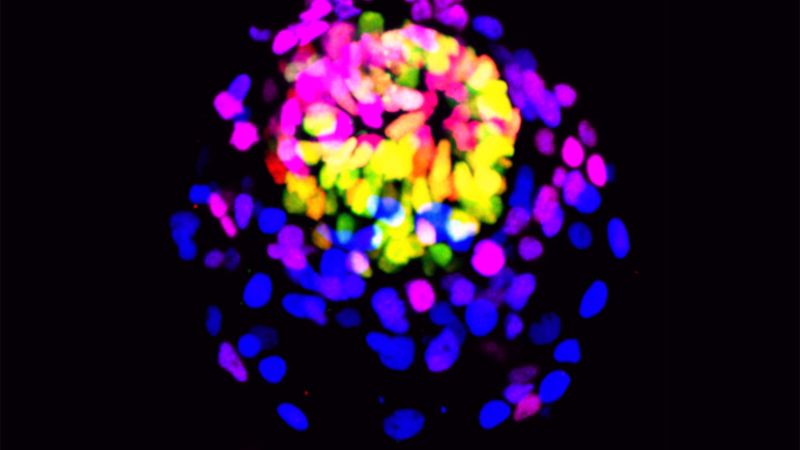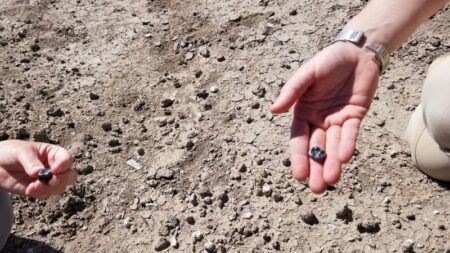Scientists are currently engaged in groundbreaking research aimed at replicating the origins of human life by simulating embryo development without the traditional components of sperm and egg. Instead of these biological entities, researchers are using clusters of stem cells, which are remarkable programmable cells capable of transforming into various specialized cell types, to create laboratory-grown structures that mimic human embryos. This innovative approach represents a significant milestone in developmental biology as it explores the fundamental processes of human life.
While these laboratory-generated embryo models are far from perfect replicas of actual embryos, they are becoming increasingly complex due to competitive advancements among various research labs. These structures begin to display characteristics and behaviors similar to those of natural embryos, which could provide vital insights into human development and infertility issues. However, the speed at which this research is progressing has sparked a wave of ethical, legal, and regulatory challenges within the developmental biology community.
Amander Clark, a professor of molecular cell and developmental biology at the University of California, Los Angeles, underlines the transformative pace of this research. As the founding director of the UCLA Center for Reproductive Science, Health and Education, Clark emphasizes the importance of balancing scientific advancements with ethical and social considerations. She is also co-chair of the International Society of Stem Cell Research (ISSCR) Embryo Models Working Group, which is advocating for a global framework to address the complexities of embryo model research.
Current models do not yet fully replicate the entirety of human embryo development, nor do they show the potential to move into later stages like the formation of a fetus, which corresponds to the eighth week of a typical human pregnancy. The process to create these embryo-like structures is challenging and, for the majority of research teams, it has often been a hit-or-miss endeavor with a limited percentage of stem cells successfully organizing into structures that resemble early embryos. Nonetheless, some of these models exhibit critical internal features necessary for embryonic development, such as the amnion, yolk sac, and primitive streak.
Despite the notable features present in the current models, researchers clarify that the intent is not to cultivate them into viable fetuses capable of sentience. Instead, they aim to develop tools that unravel the complexities of how human cells divide and develop into fully formed bodies, facilitating experiments that may not be feasible using donated embryos. However, as research progresses, the line distinguishing lab-grown models from living human embryos may become increasingly blurred.
The ISSCR’s recommended guidelines are being updated to enhance oversight around embryo model research. Their previous guidance, established in 2021, separated “integrated embryo models,” which attempt to replicate a complete embryo, from “non-integrated models,” which focus on individual components. The revised guidelines will propose that research involving both types undergo thorough ethical and scientific reviews, reinforcing the need for vigilant oversight.
Countries are addressing the implications of embryo models differently. For instance, Australia has introduced stringent regulations requiring permits for research involving embryo models, while the Netherlands has proposed similar legal recognition. In contrast, the United States currently lacks a specific legal framework for these models, leaving oversight largely to individual institutions. Experts suggest international guidelines, such as those from the ISSCR, are crucial to uphold ethical standards and guide researchers globally.
As researchers make strides using stem cell-based embryo models, diverse opinions surface regarding their use. While some see great potential, others raise concerns about the possibility of using these models in ways that could lead to creating viable embryos, emphasizing the importance of strict guidelines to prevent misuse. The ongoing dialogue underscores a delicate balance between harnessing the potential of these technologies and ensuring ethical boundaries are respected.
In conclusion, the creation and exploration of stem cell-based embryo models invite a future filled with possibilities, along with significant responsibility. As scientists like Magdalena Zernicka-Goetz announce advancements towards mimicking early embryonic stages, it becomes vital to navigate this uncharted territory thoughtfully. Developing these models to address pressing issues in fertility and embryo development is incredibly promising, yet it necessitates an unwavering commitment to ethical principles and oversight to ensure that scientific progress remains aligned with societal values.












